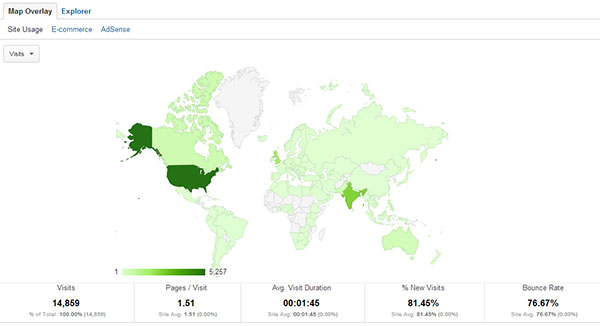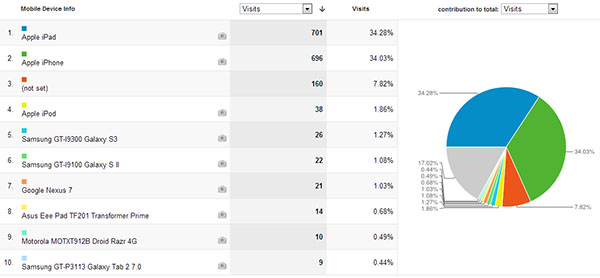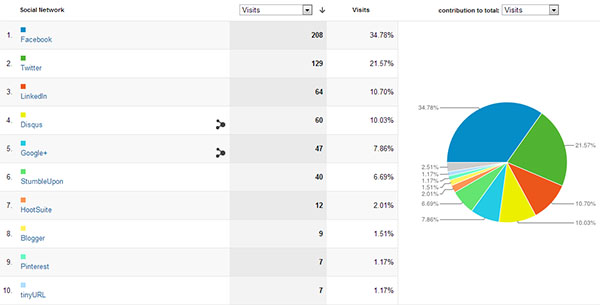Google Analytics has fast become one of the most popular website Analytics applications used by web designers and online businesses today. If you’re not yet familiar with its wide range of tools, or if you’re yet to be convinced that Google Analytics is for you, here’s what it’s all about…
Is Google Analytics For You?
What Does It Do?
Google Analytics performs a detailed analysis of a website’s functionality. It allows you to get a clearer picture of how your site is used. For example: you’ll learn how many people per day leave your site without clicking a single link (known as bounce rate), you’ll find out which pages are most frequently landed on, which channels direct the most traffic and which routes are most likely to lead to commercial results. Armed with this information, you can begin to make tailored improvements to address your site’s particular needs.
Here are some examples of the data that you can find in Google Analytics;
Visits
Unique Visits
Pageviews
Pages / Visit
Bounce Rate
Avg. Visit Duration
Location Demographics
Who Is It For?
Anyone with a website or an online business can make use of Google Analytics. It’s an application for anyone who wants to learn how best to improve their site in order to achieve goals, whether this is the number of T-shirts sold, customer surveys completed or business inquiries received.
Visit Tracking
Analytics allows you to separate site users into a number of different categories. For example, an e-commerce site might use categories such as: ‘new user,’ ‘new users who create accounts,’ ‘new users who add to cart,’ ‘new users who purchase,’ etc.
You can also track the activity of returning visitors—to see who comes back to browse products or purchase or who continues to land on the site without taking further action.
New vs. Returning Visitors
Conversion Rate Optimization
Once you know more about who is visiting your site, how long they stay and what they do there, you can start to work on your Conversion Rate Optimization. This means holding attention for longer, getting more clicks, more views or more sales. To learn how your site could reach the next level, you’ll find top conversion tips here.
Set Fresh Targets
Analytics allows you to set a range of goals, from keeping people interested in your site or getting more customers to add themselves to your mailing list and (via the ‘e-commerce’ feature) keeping track of sales and revenue. By dividing your targets into simple categories, you’ll be able to effectively measure your progress in each. For example: if you’ve improved your interface and customers are spending longer browsing your products, that’s a great result. If this still isn’t translating to sales then perhaps you need to work on creating a more intuitive route to take users from cart to checkout.
Widen Your Platform
One of the most useful features of Google Analytics is that you can see how many people are accessing your site through a tablet or mobile.
Mobile Device Info
If your site doesn’t offer great functionality to mobile users, this could affect conversion rates. Make sure that your site is accessible to everyone, however they reach you.
Stay Informed
‘Intelligence’ is a new feature of Analytics that allows you to keep on top of the information that Google Analytics provides. It allows users to customize their update settings, so when a certain kind of data is received – when a particular route is followed or a number of sales have been made – an update will be sent you as an email notification.
Social Media
If your website is linked to social media sites, Analytics will help you to see how effective these are at directing traffic back to your site. You can see how many visits came via Twitter or Facebook and experiment with improving your use of these tools to see how more traffic might encouraged.
Social Media
These are just some of the ways in which Google Analytics can help your website, in reality this is just the tip of the iceberg. The biggest benefit to your business is seeing areas that are working, and more importantly, areas that aren’t. Once you know where you can improve, you can set about working to fix those aspects and ultimately grow your website.
Keen to give it a go but not sure where to start? Using a whole new application – particularly one as intricate and multi-functional as Google Analytics – can feel like an intimidating move. But you can make life easy for yourself when you follow the step-by-step directions contained within this simple Google Analytics guide.












CommentLuv vs Disqus – Why I Don’t Use CommentLuv!